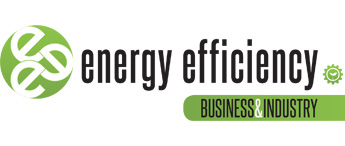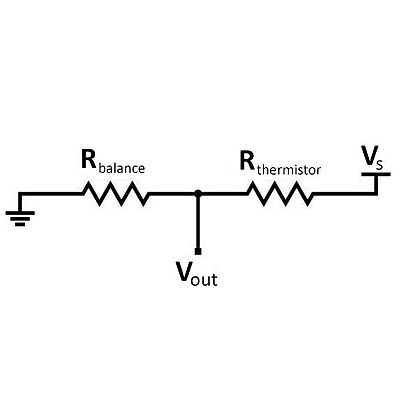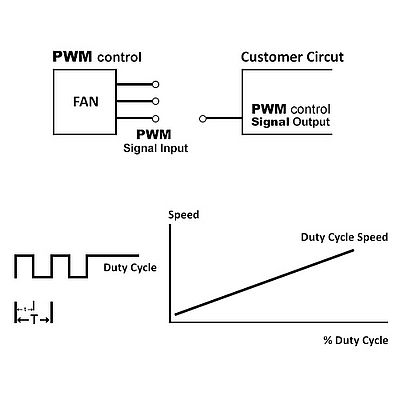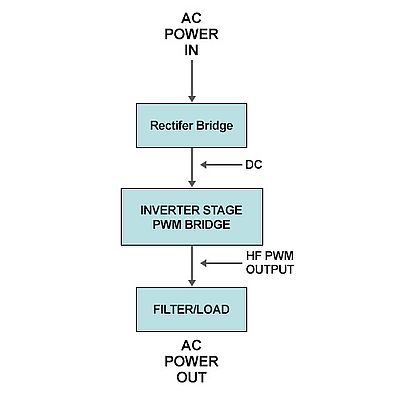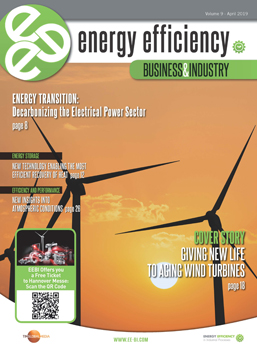By Marcin Witkowski, Head of Electromechanical Components Division at TME
A high proportion of all energy consumed worldwide is used to power fans for cooling and ventilation in a wide variety of contexts, from computer systems and industrial automation to residential and commercial buildings. Their efficiency can be increased, and a large amount of energy saved, by changing from conventional DC- or AC-powered motors to electronically commutated motors that can also be quieter and more reliable.
DC Fans Go Brushless
Brushless DC (BLDC) motors have replaced conventional brush motors in many applications for low-voltage DC fans, such as cooling electronic components. Their higher efficiency delivers several advantages including improved appliance energy ratings and can extend the runtime of battery-powered equipment. In addition, the absence of carbon brushes eliminates familiar drawbacks such as mechanical wear, and electrical arcing. In addition, since the powered coils are outside the rotor, cooling by conduction is possible allowing the motor to be sealed to prevent ingress of dust or other contaminants. The fan speed can be adjusted using voltage control, such as a common 1-10V signal, or using a PWM signal generated by a microcontroller or motor-driving circuit.
Using 1-10V analogue control, the fan speed can be easily increased or decreased with rising or falling temperature using a thermistor circuit. Figure 1 shows how a negative temperature coefficient (NTC) thermistor can ensure the applied voltage increases linearly as the thermistor resistance decreases with rising temperature thereby raising the fan speed to increase cooling. Alternatively, a fixed frequency Pulse Width Modulated (PWM) square wave can be applied to the speed control lead wire of the fan (figure 2). The fan speed is proportional to ratio of the ON time vs the PWM period.
EC Fans Boost AC Applications
As a replacement for conventional AC fans, EC fans that integrate AC/DC-conversion and electronic motor-drive circuitry are a relatively new alternative. With the latest electronic technologies and impeller aerodynamics, EC fans such as a range of options from EBM-Papst and CF4113 series by Sunon can achieve efficiency as high as 90% compared to 70-80% for the best 50Hz AC fans. In addition to helping reduce utility costs and easing compliance with ecodesign regulations such as the EU’s ERP legislation - which applies to all applications with power ratings from 125W to 500kW – the substantial reduction in energy consumption also lowers self-heating and consequently helps increase reliability. A further advantage is that the EC fan is typically about half as loud as an AC fan at comparable air performance and can be up to 6dB quieter at some operating points according to information published by EBM-Papst, creating a more pleasant environment for people working or living in the vicinity.
By integrating power-conversion and motor-control electronics that allow the unit to be connected directly to the AC power source, EC fans simplify design and save space. Engineers selecting an EC fan can assume that the datasheet efficiency will be representative of the overall system efficiency. There is no need to consider the additional effects of the external power supply and control electronics that must accompany a conventional AC fan. Essential protection, interference suppression, soft-start circuitry, and communication ports are usually also built in. However, the EC fan can have dimensions similar or identical to a comparable AC fan. This physical compatibility allows easy replacement of AC fans in existing equipment designs, so upgrading to EC technology can be fast and straightforward.
Conventional AC fans operate at a fixed rotor speed relative to the AC supply frequency. If variable speed is required, phase control using a triac to chop the input AC waveform (figure 3) or an inverterised variable-frequency drive (figure 4) is required.
Higher Efficiency, Lower Noise
With phase control, energy efficiency drops significantly as the motor speed is reduced, whereas the EC fan operates continuously at close to maximum efficiency across a wide load range. The other alternative, the inverter drive, adds to the cost of the system and also introduces energy losses. Moreover, protection may be needed against unwanted shaft voltages and associated stray currents that can cause bearing erosion leading to early failure. Leveraging its built-in electronic controller, the EC fan allows a simple analogue or PWM waveform to control the fan speed in the same way as a DC fan. The motor speed is independent of the supply frequency and is also unaffected by any fluctuations in the AC supply voltage. Electronic speed control gives product developers unprecedented flexibility to maximise energy savings at the application level, ensure quieter operation, and create value-added features such as remote control and monitoring. In air-conditioning condensers, EBM-Papst claims that EC fans cut energy consumption by more than 10% compared to a conventional phase-controlled AC motor at nominal speed and as much as 50% at other operating points. In air-conditioning or mechanical-ventilation applications, for example, the system may be required to maintain constant air pressure in a duct as airflow varies. Conversely, in filtered systems, the fan may be required to main constant airflow as the operating pressure changes between filter-service intervals. If the fan speed is fixed, a damping system is used to adjust the airflow, effectively wasting a proportion of the energy supplied to the fan. By varying EC fan speed in response to pressure-sensor data, airflow and pressure can be adjusted to meet the exact requirements at any given time thereby maintaining consistent performance and matching the energy consumption to system demand - maximising efficiency and reducing utility costs. In addition to avoiding energy waste, lowering the fan speed reduces audible noise both from the motor and the movement of air. Another way to vary the airflow at fixed motor speed is through a switched multi-motor array. A condenser may have four AC fans operated at fixed speed. Switching two fans off reduces the airflow by 50% while also reducing energy consumption by 50%. Noise is reduced by about 3dB. In contrast, a comparable array of four EC fans consumes less than one third of the maximum energy when the speed is reduced to 50% airflow, while noise is reduced by 15dB.
Conclusion
Maximising the efficiency of fans used in cooling and ventilation systems could significantly reduce global energy consumption. Utilising space inside equipment enclosures effectively and reducing audible noise are two further potential benefits to be gained by adopting improved cooling fan technologies. Electronically Commutated (EC) fans can meet these targets, combining the advantages of AC and DC motors within an outline no larger than that of a comparable conventional AC motor.
